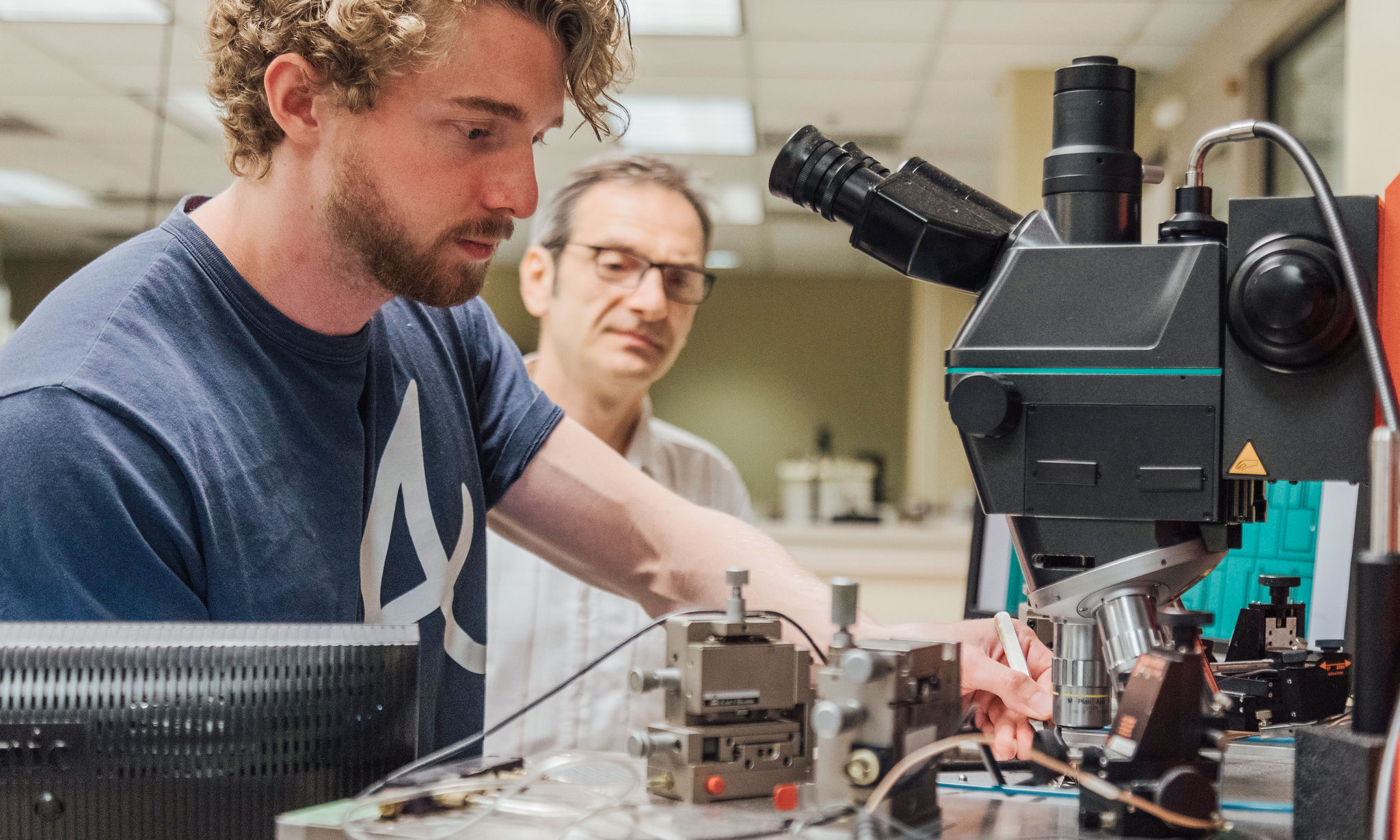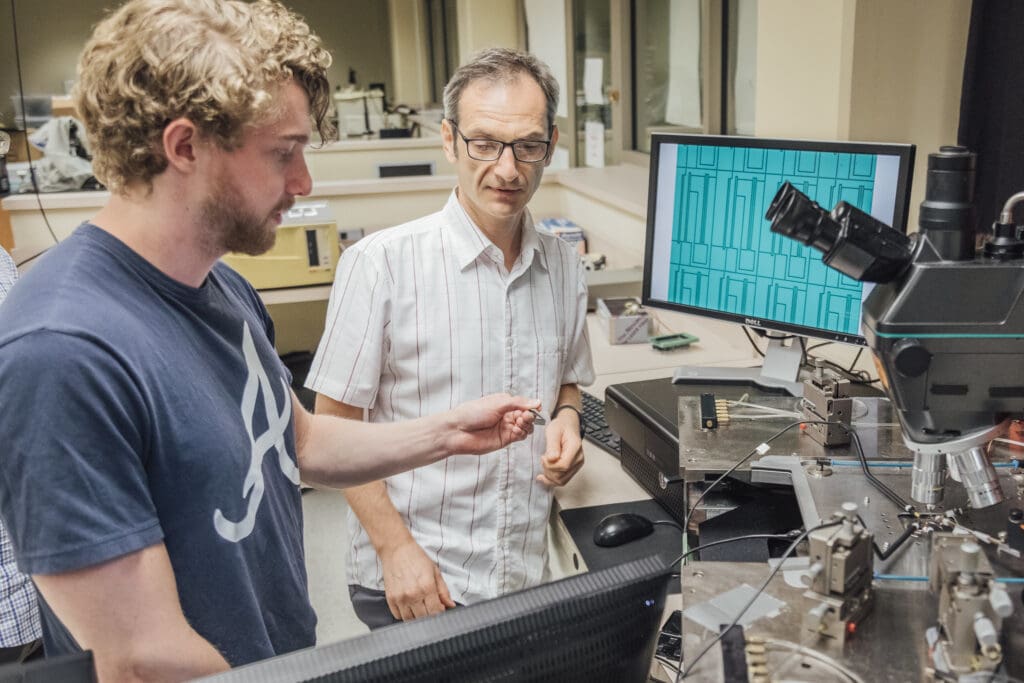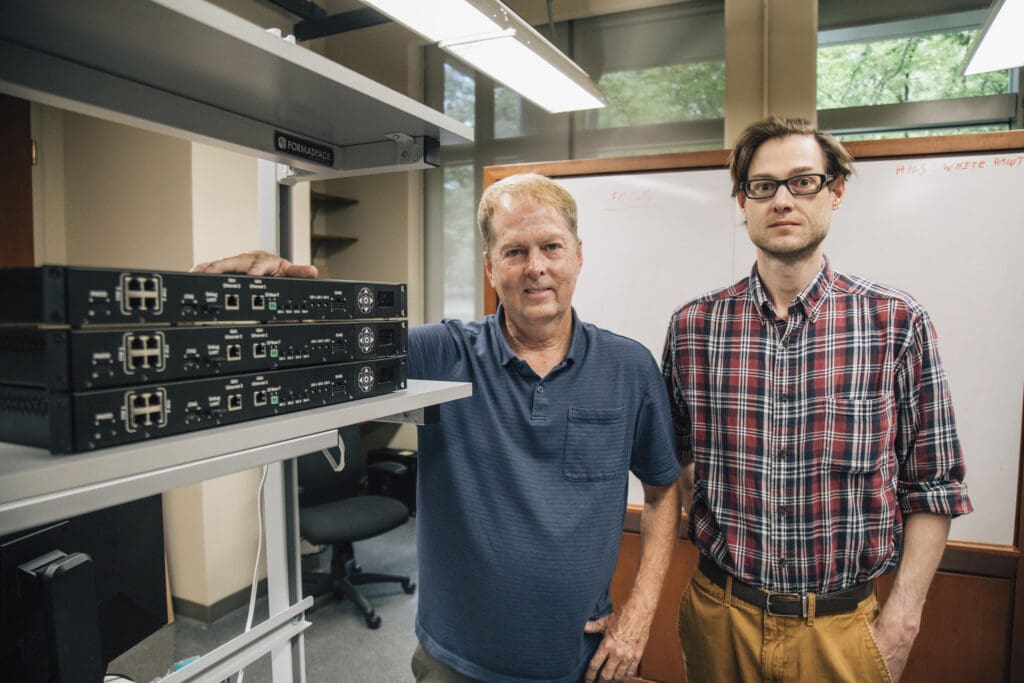Complex problems, SymPle solutions: VCU Engineers utilize hardware technology to change the future of safety-critical systems

Safety-critical systems are all around us – from everyday medical devices to aircraft control to the self-driving technology in your new car – these are the systems developed to keep us safe as technology advances. Researchers at the VCU College of Engineering’s Department of Electrical and Computer Engineering are changing the way we develop these systems.
Parallel projects run by Electrical and Computer Engineering Professors Carl Elks, Ph.D. and Ümit Özgür, Ph.D. utilize physics-based hardware solutions to challenges where software poses significant security vulnerabilities. These systems will have implementations across industries in high-stake situations, the most prevalent being the nuclear power industry.
Instead of relying on software-controlled digital microprocessors, Özgür’s team uses micro- and nano-electromechanical systems (MEMS/NEMS) as logic solvers.
MEMS and NEMS are technologies that combine mechanical and electrical components at the micro- and nano-scale. The micro-scale refers to systems of dimensions less than one millimeter and the nano-scale to those smaller than one micrometer. For reference, the average diameter of a strand of human hair is approximately 70 micrometers.
MEMS and NEMS are already prevalent in our society, from everyday applications like motion detecting in smartphones to advanced, high-precision biomedical devices. Özgür’s team, utilizing this pre-existing technology, is developing devices that use electrostatic forces to move silicon actuators to perform simple logic operations.

“Our goal is to provide a non-software, physics-based diverse instrumentation and control technology for safety-related and safety-critical applications in nuclear power plants,” Özgür said.
Because hardware is the tangible, physical component of a system, it is harder to change than software; however, this restricted configurability is actually more favorable when applied to safety systems. Its immunity to cyber-attacks, software design flaws and environmental hazards give hardware a much higher reliability than software systems, while also providing a smaller footprint and lower maintenance costs. For example, replacing the old systems used in nuclear power plants with MEMS and NEMS technology would condense an entire room of relay systems to a four-inch (100 millimeter) diameter slice of a silicon semiconductor, which is the mainstay of the microelectronics industry.
Özgür’s team is made up of electrical and computer engineering professors Vitaliy Avrutin, Ph.D. and Gary M. Atkinson, Ph.D., postdoctoral researchers Md. Ataul Mamun Ph.D. and Kai Ding, Ph.D. (past), and doctoral students Bennett Smith and Benjamin Horstmann.
While both Elks’ and Özgür’s research leverages hardware-based architectures in their solutions, Elks’ project approaches the problem from a slightly different angle. Elks and his team saw the root of the issue was not just the software but the complexity within the systems and lack of awareness when designing them, prompting his creation of the SymPle technology.
“SymPle was born out of the curiosity to look at things differently,” Elks said. “Our innovation stems from understanding, managing and constraining complexity according to our complexity-aware design philosophy.”

Through this methodology, Elks and his team have built a highly-constrained, digital hardware platform, the first known overlay architecture for safety-critical computing, embedded with only essential security and safety attributes. This complexity-aware design reduces the cost of verification and validation, making SymPle a more affordable solution that is certifiable to necessary safety requirements.
The SymPle overlay architecture can be implemented on a Field Programmable Gate Array (FPGA), which is a configurable hardware chip, or an Application Specific Integrated Circuit (ASIC), which is a hard-wired device built to perform specific functions. Essentially, this configurability creates a flexible hardware system that acts similarly to software without the associated security risks.
Elks’ team is made up of doctoral students Rick Hite and Robert Grizzard, and research associate Asa Collins, with past contributors Smitha Gautham, Ph.D., Abhi Rajagopala, Ph.D., Christopher Deloglos, Ph.D. and Athira Jayakumar.
In addition to the team, SymPle has also been made possible through a partnership with the Electric Power Research Institute (EPRI), a research company working to develop technology solutions for its member companies to address challenges in the power industry. Both the SymPle and MEMS and NEMS technology are currently in the process of commercialization through EPRI, hopefully bringing these new and innovative technologies to the forefront of the industry.
“We’re proud of the impact our research is having on society,” Azim Eskandarian, D.Sc., Alice T. and William H. Goodwin Jr. Dean of the VCU College of Engineering, said. “And we’re committed to continuing this work to drive progress and innovation. The work Özgür and Elks are doing in partnership with EPRI is a great example of how industry and academia can work together to solve real-world problems.”
The Department of Electrical and Computer Engineering provides undergraduate and graduate students with the opportunity to perform real-world research as soon as they enroll. From delving into the intricacies of circuits to understanding computer programming, electromagnetics and more, students gain understanding of many important engineering topics. Browse videos and recent news from the Department of Electrical and Computer Engineering to discover how the College of Engineering at Virginia Commonwealth University prepares the next generation of scientists and engineers for the challenges of the future.
Categories Electrical & Computer Engineering